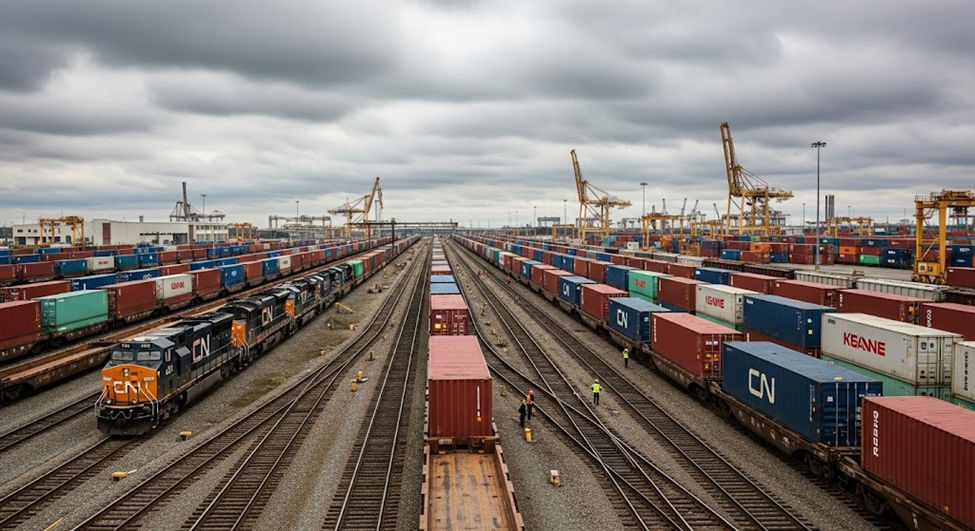With the growing trade uncertainty and volume reduction, Canadian National (CN) Railway has lowered its annual forecast and retracted its 3-year outlook. Nonetheless, these headwinds have not prevented the company from posting an operating income after cost-cutting measures of the most aggressive kind.
This blog is about the developments for the larger freight and logistics sector, wholesale bulk transportation, intermodal freight, and expedited transportation services.
CN's Performance Amid Trade Headwinds
Second-quarter results at CN reflect a challenging setting of tariff concerns and softening economic demand. Trade disputes, particularly on Canadian exports to the U.S., severely stifled international intermodal, automotive, and merchandise traffic.
Trade uncertainties in North America are on the rise, as emphasized by CEO Tracy Robinson, who pointed out how freight forecasting is becoming increasingly complex by recent tariff announcements, such as a 35% tariff on Canadian goods starting Aug. 1.
Shifts in Volume & Segment Impact
While the carloads and containers basically remained at a relatively constant level for CN, revenue ton-miles fell by 1%. There were slight increases for bulk transport services, with gains of around 12% in grain and potash transport. Yet, such increases were far from enough to compensate for the revenue losses coming from higher-margin divisions such as intermodal and automotive.
Janet Drysdale, interim chief commercial officer, observed that the growth within the domestic intermodal was not sufficient to balance out the losses in international and merchandise freight business. This realignment is essential for the logistics providers in intermodal shipping services, as the possible changes in supply chain flow patterns may provide some opportunities.
Cost-Cutting Measures and Financial Adjustments
Faced with weakened volumes, the CN responded by furloughing 560 train crew members, putting 200 locomotives out of railway operation, and setting 4,000 freight cars into storage. Measures such as these enabled CN to cut its costs and bring its operating ratio down to 61.7%.
Operating income has grown by 5% and reached $1.2 billion after a 1% drop in revenues. This increase, however, was underpinned by strict operational discipline and lower capital expenditure of $36.7 million.
Long-Term Outlook and Freight Implications
CN, however, anticipates that several growth projects in Western Canada will proceed as anticipated, posing potential for future volume growth through key revenue corridors.
What This Means for the Freight & Logistics Sector
The CN volume decline will further ripple because various logistics sectors are involved. Activity restrictions may take place among intermodal shipping service providers, whereas expedited transportation services may see high demand as shippers avoid possibly congested or uncertain routing.
Bulk transportation services are expected to remain stable due to ongoing grain and potash shipments, but are still sensitive to general economic activities.
Conclusion
As CN tries to combat market turbulence with prudent cost management, logistics providers must be similarly flexible. Intermodal freight shipping, bulk shipping services, and expedited transport firms should keep a keen eye on policy shifts and carrier performances to effect those changes in their capacity planning and service offerings.




